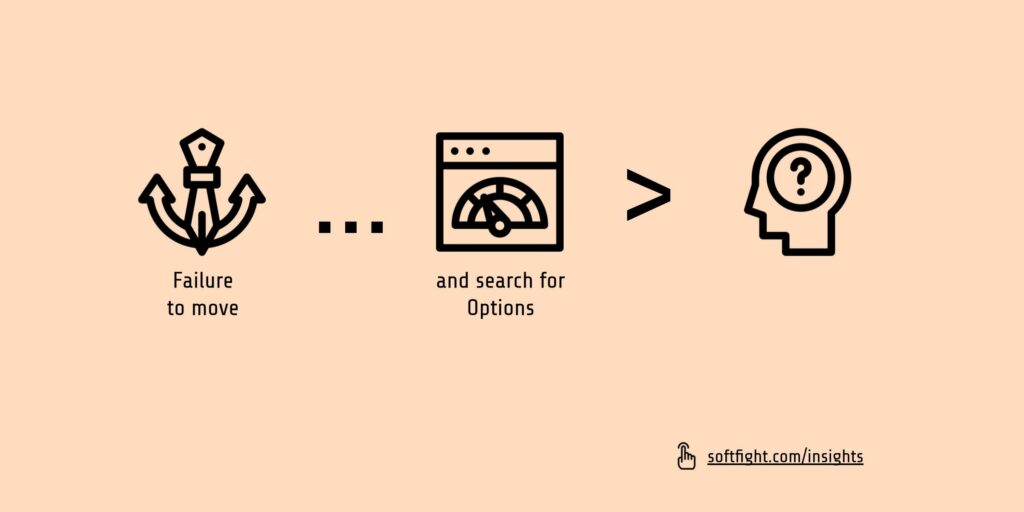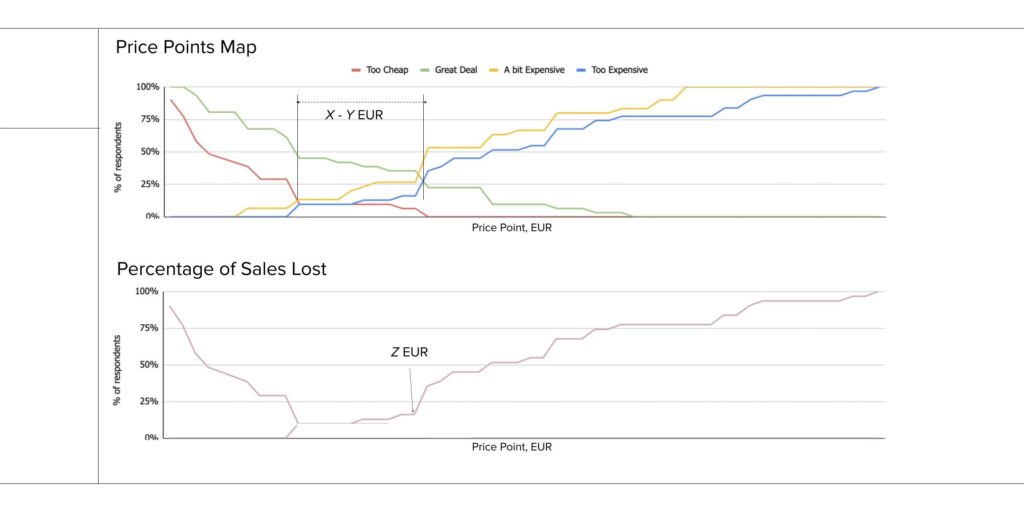Your thinking about pricing should rotate around one axis: Willingness to Pay.
Why this matters
Whether you are selling high-volume, relatively low-priced software development services or you are positioned as a highly specialized, quality supplier charging premium rates, this is a wall you will keep bouncing against: the Willingness to Pay (WTP) wall.
When you are talking to a customer about a new project, their thinking and decision making will be heavily influenced by:
- Their expectations of how much it should cost
- Their capacity to afford a certain budget
- The value of that project for their business and its probability of increasing revenues or reducing costs
- The relative difference that a specific supplier could make in terms of value delivered, which can impact the customer’s calculations
- Their personal psychological profile and history of accumulated experiences. Some people see themselves as cost-conscious and they have a strong conviction of “never paying more than it’s worth” (whatever that means). Others believe that it always makes sense to buy the highest quality they can afford (again, whatever that means).
The sum of all these is their Willingness to Pay.

Hourly rate vs total budget
Many sellers ask questions about their customers’ WTP in terms of hourly rate (or the pricing metric most commonly used in their segment of the market).
That is a big mistake.
A much better way to think about WTP is in terms of the total budget for the project.
Yes, most of the time, buyers will ask about the hourly rate, because this allows them to easily compare all the offers in one excel spreadsheet.
But this doesn’t mean it’s in their best interest to do that.
And it’s certainly not in your best interest as a supplier.
In the initial phases of the conversation with the customer you should be focused on understanding what is their WTP in terms of the total budget and which are the aspects they value most. For example, you could try to get their input on whether the timeline, the scope or the cost is more important and how they would prioritize these against each other.
How can you measure your customers’ WTP
A few months ago I received an email from a local company that charges me monthly for a service. It read something along the lines of:
- We have not raised prices for many years
- In this time, our costs have increased (salaries, certifications, materials), inflation is up, currency exchange rate is up. We are thinking of raising the prices. With this in mind, we have some questions
- Can you afford to pay more each month?
- If yes, how much more (percentage)?
- If not, why not?
I kid you not, this is what they asked (I just checked the email and survey again now, to make sure my memory is correct).
This is NOT how you get reliable data on your customers’ WTP.
If you can find at least 150 customers or potential customers to do a proper survey, the recommended method is the Van Westendorp Price Sensitivity Meter.
It relies on asking 4 questions to each respondent:
- At what price the offer is a bargain – a great buy for the money?
- At what price the offer is getting expensive, but you still might consider it?
- At what price the offer is too expensive to consider?
- At what price the offer is so inexpensive that you would question the quality and not consider it?
With the data collected you can build a visual representation like this one.
This is a chart adapted from one of the pricing projects I worked on. I chose to hide the numbers and price levels, for obvious reasons.

This will show you what is an optimum price interval (minimum and maximum) from the customers’ perspective.
And it will help you get closer to an optimum price point that maximizes what you are trying to maximize: profits, revenues or volume.
What to do if you don’t have 150 respondents to answer your survey
I can only recommend what follows for some very specific situations and it’s certainly in the category of “handle with care”.
If you are selling in an established market, with a high number of customers, suppliers AND there is a straight-forward way to evaluate objective quality delivered, you can use competition data as a proxy for WTP.
In principle, the thinking is:
- If these other companies are able to charge certain rates and sustain a business for the long-run, it means there are customers willing (and capable) to pay these prices.
- Now the question becomes: which rates are paid, by which types of customers, for what quality delivered > so it becomes a segmentation and positioning exercise.
I have used this approach (successfully I would say) for software development services.
But, I need to stress this again, it’s not for all companies and it’s applicable in a very limited number of use cases.
WHAT THIS MEANS FOR YOU
It’s simple.
You have to think about Willingness to Pay every single day.
Without exception.
It’s critical for your business.
You have to find ways:
- To understand and quantify it
- And influence it.
That’s the big opportunity. You can also influence your customers’ WTP.
You are not a boat out at sea, at the mercy of the waves of pricing.

